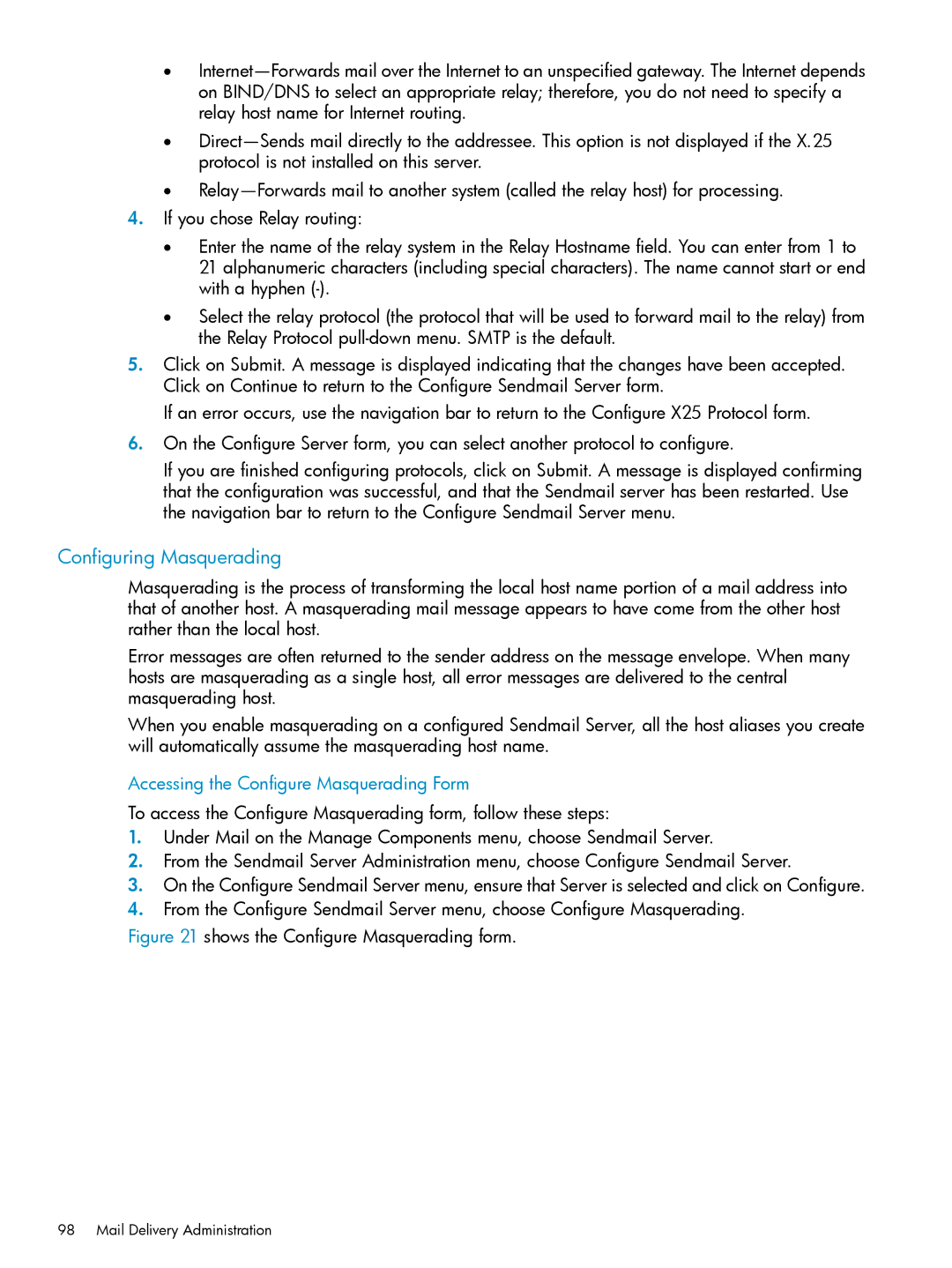•
•
•
4.If you chose Relay routing:
•Enter the name of the relay system in the Relay Hostname field. You can enter from 1 to 21 alphanumeric characters (including special characters). The name cannot start or end with a hyphen
•Select the relay protocol (the protocol that will be used to forward mail to the relay) from the Relay Protocol
5.Click on Submit. A message is displayed indicating that the changes have been accepted. Click on Continue to return to the Configure Sendmail Server form.
If an error occurs, use the navigation bar to return to the Configure X25 Protocol form.
6.On the Configure Server form, you can select another protocol to configure.
If you are finished configuring protocols, click on Submit. A message is displayed confirming that the configuration was successful, and that the Sendmail server has been restarted. Use the navigation bar to return to the Configure Sendmail Server menu.
Configuring Masquerading
Masquerading is the process of transforming the local host name portion of a mail address into that of another host. A masquerading mail message appears to have come from the other host rather than the local host.
Error messages are often returned to the sender address on the message envelope. When many hosts are masquerading as a single host, all error messages are delivered to the central masquerading host.
When you enable masquerading on a configured Sendmail Server, all the host aliases you create will automatically assume the masquerading host name.
Accessing the Configure Masquerading Form
To access the Configure Masquerading form, follow these steps:
1.Under Mail on the Manage Components menu, choose Sendmail Server.
2.From the Sendmail Server Administration menu, choose Configure Sendmail Server.
3.On the Configure Sendmail Server menu, ensure that Server is selected and click on Configure.
4.From the Configure Sendmail Server menu, choose Configure Masquerading.
